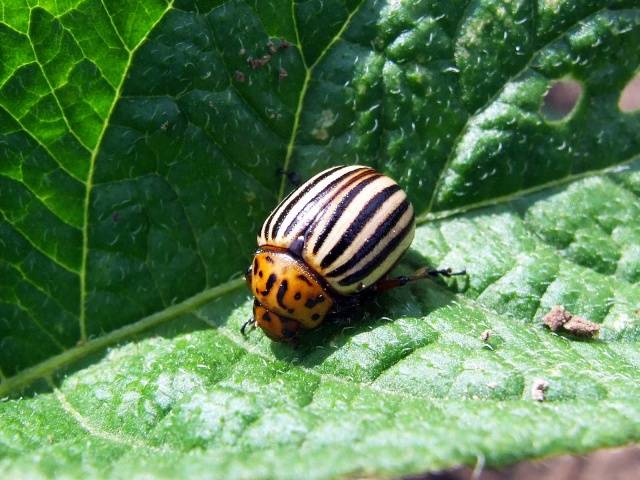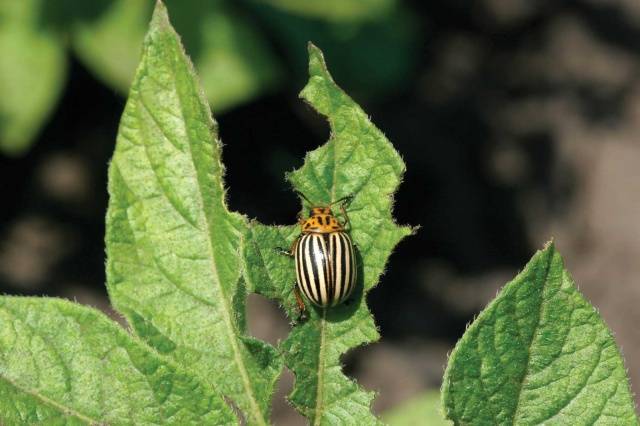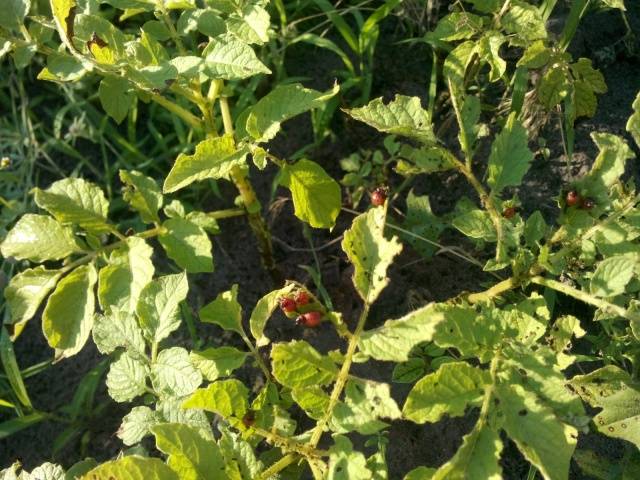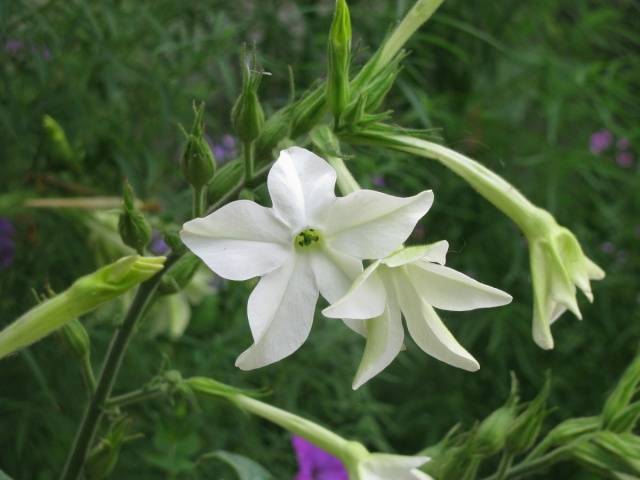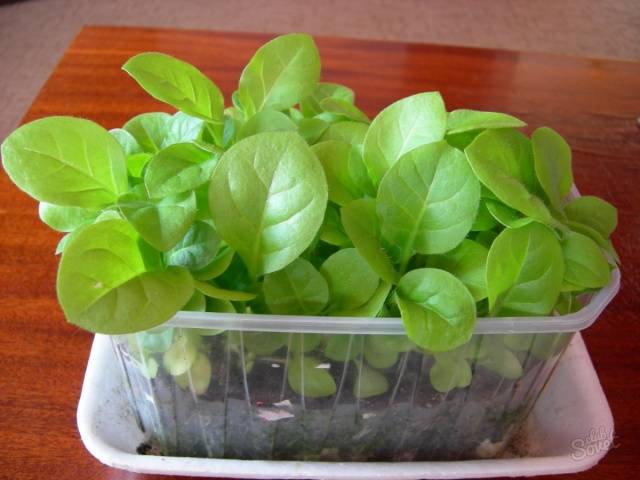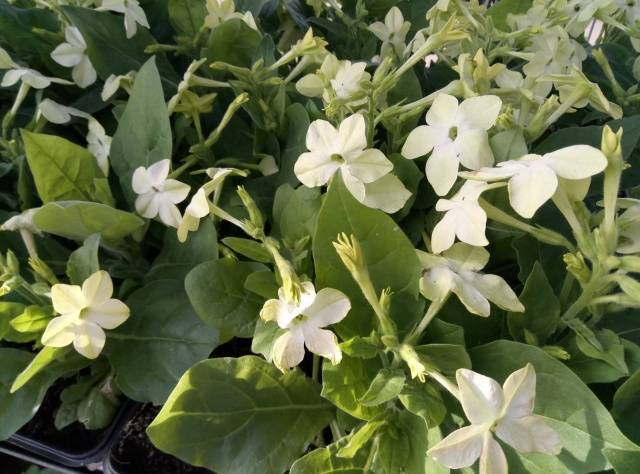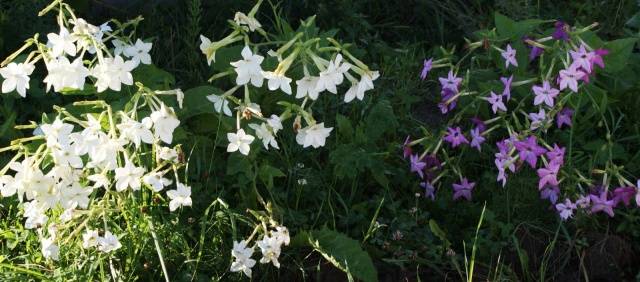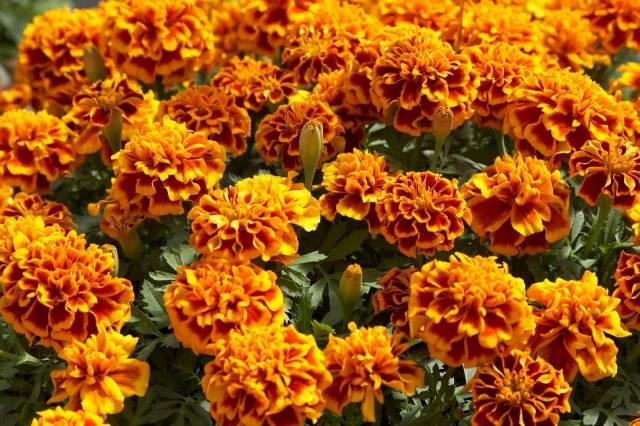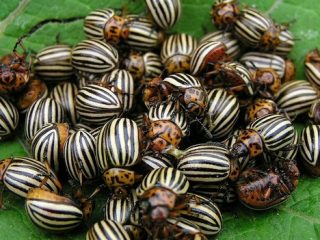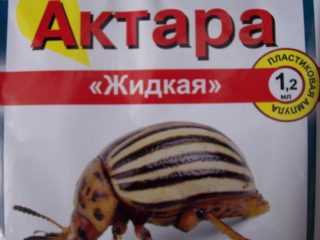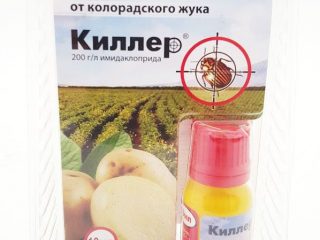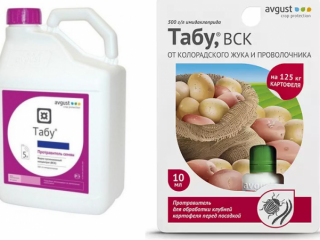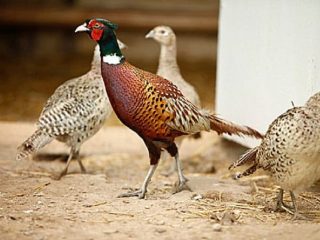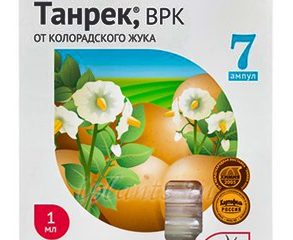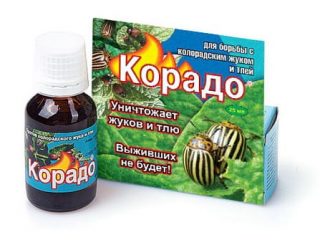Content
The Colorado potato beetle causes damage to potato and other nightshade crops. The insect eats shoots, leaves, inflorescences and roots. As a result, plants cannot develop normally and their productivity decreases.
Fragrant tobacco from the Colorado potato beetle is one of the folk methods of combating this pest. Planting this plant allows you to get rid of a large number of insects. Tobacco leaves and stems attract pest, however, are detrimental to him.
Description of the Colorado potato beetle
The Colorado potato beetle is one of the most dangerous pests in gardens. The insect became widespread in the USSR in the fifties of the twentieth century.
The insect has the appearance of a beetle, up to 12 mm long, round in shape with black and yellow wings. There is a dark spot on the head.
The insect spends the winter in the ground at a depth of about 20 cm. On sandy soils, the insect can go 30 cm deep, which allows it to survive winter frosts. About 60% of pests survive the cold in winter.
In the spring, these insects crawl to the surface, where the female begins to lay eggs. Up to 800 larvae may appear per season. Under favorable conditions, they appear within 30 days.
The larva goes through several stages of development, after which it goes into the ground. There a pupa is formed, from which an adult emerges.
Harm from the Colorado potato beetle
The Colorado potato beetle prefers nightshade crops (eggplant, peppers, tomatoes), however, it is most often found on potatoes. The appearance of the larvae occurs during the potato flowering period, when the plant is most vulnerable.
The Colorado potato beetle eats the above-ground parts of potatoes, their shoots, stems and tubers. In search of a food source, insects fly over distances of several tens of kilometers.
Initially, the pest is not easy to notice, since it lives on the lower leaves of the potato. Over time, the insect reaches the top of the bushes.
The pest prefers young leaves. The larva eats up to 100 mg of tops per day. As a result of its activity, only the rough parts of the leaves remain.
Properties of fragrant tobacco and cultivation
Fragrant tobacco is a herbaceous plant up to 0.9 m high, with large leaves and small flowers. This variety has a strong aroma that intensifies in the evening.
[get_colorado]
The stems and leaves of fragrant tobacco attract insects, however, they contain toxic substances. As a result, the pests die.
Fragrant tobacco grows on any type of soil. The exception is too poor soils, which require fertilizer in the form of compost or humus.
When planting this plant, no additional fertilizing is required; standard fertilizers for potatoes (wood ash, superphosphate, potassium sulfate) are sufficient.
Fragrant tobacco grows in bright sun, however, tolerates partial shade. Plants require watering periodically.
Obtaining seedlings
Fragrant tobacco is grown using the seedling method. Seeds are planted two months before potatoes are planted. By this point the plant will reach a height of 20 cm.
You can start planting in early April. This will require small containers and light soil. The seeds are placed shallowly in the soil, then the containers are covered with film or glass. Germination occurs at a temperature of 20°C.
When the shoots appear, the temperature is lowered to 16 C. Seedlings of fragrant tobacco require moderate watering. Before moving plants into open ground, you need to leave them in the fresh air for two weeks.
Landing at the site
Fragrant tobacco will attract Colorado potato beetles from neighboring areas. But the pest larvae prefer other food. Therefore, to get rid of them you will have to use other methods. When planting fragrant tobacco next year, you can finally get rid of the Colorado potato beetle.
In the first year, fragrant tobacco against the Colorado potato beetle is planted along the perimeter of the potato plantation. Up to 1 m is left between plants. Between rows of potatoes, tobacco is planted in 10 m increments.
Plants can also be planted in mid-summer. In this case, the Colorado potato beetle will have time to lay eggs before it dies, so the fight against the pest will be postponed until next year.If the number of pests is large, then planting fragrant tobacco is carried out in several stages.
Advantages and disadvantages
Fighting the Colorado potato beetle by planting fragrant tobacco has undoubted advantages:
- high efficiency;
- low costs;
- low labor intensity (it is enough to plant plants to get rid of insects);
- unpretentiousness of fragrant tobacco;
- there is no habituation of beetles to plants;
- there is no need to use chemical pest control methods;
- plants are harmless to humans, animals, bees and other beneficial insects.
When using the method, you should remember its disadvantages:
- tobacco attracts a large number of beetles from all areas;
- to completely get rid of pests, it is recommended to repeat planting for three years;
- fragrant tobacco is effective only against adults.
Other plants from pests
Planting other plants that repel pests helps protect potatoes from the Colorado potato beetle:
- Calendula. An annual plant with yellow and orange flowers in the form of baskets. Calendula is planted between rows of potatoes to protect the crops from pests and fungal diseases.
- Mattiola. A plant with fragrant racemose inflorescences, which has a straight stem and dark leaves. Matthiola is undemanding to the soil and adapts to different climatic conditions.
- Marigold. These low-growing plants with double inflorescences protect plantings from pests and have the ability to disinfect the soil. One row of potatoes requires 3 marigold bushes. They do not require care and grow in any type of soil. It is allowed to plant marigolds in open ground.
- Tansy. A common perennial that is considered weed. Decorative varieties of tansy contain essential oils that are toxic to pests. The pungent odor repels the Colorado potato beetle, weevil, and onion fly.
- Coriander. A herbaceous plant with a branched stem and small flowers collected in an umbrella. Coriander is demanding of moisture and prefers soils fertilized with nitrogen and phosphorus.
- Nasturtium. An annual plant with rounded leaves and large yellow or orange flowers. Nasturtium prefers a moderate supply of moisture and nutrients; it is enough to add moisture on the driest days.
Conclusion
The Colorado potato beetle causes damage to potato plantations, however, it can also appear on eggplants, tomatoes and peppers. The insect destroys the tops and stems of potatoes and other crops. One of the methods of pest control is to plant fragrant tobacco. This plant is easy to care for and can grow on any type of soil.
To completely get rid of the Colorado potato beetle, it is necessary to plant fragrant tobacco annually. First, seedlings are obtained at home, which are then transferred to open ground. To achieve the best result, fragrant tobacco is planted along the perimeter of the potato plantation and between the rows of bushes.
